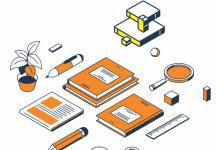
Oxford High School freshman Julia Begley says she was in a nearby hallway on Nov. 30 when the shooting started. Her voice is small as she stands in a parking lot later that same day, parents by her side — about to enter Lakepoint Community Church to partake in one of the saddest rituals of modern American life for many teens: a memorial service for classmates killed in school by a spray of gunfire.
She shivers as she talks about hiding in the bathroom that day as another student, Ethan Crumbley, allegedly opened fire just before fifth period. Maybe she’s trembling from the cold, but probably not. “I was just very confused and really anxious — just panicking,” she says quietly. “I was holding my friend’s hand with one hand. With the other, I was holding the girl next to me. I didn’t know her, but it felt like I’d known her a long time.”
This, too, is a ritual of these events: children telling their horror stories to journalists. In most cases, the American public digests the sorry data — four dead, seven injured, hundreds scarred for life — as news producers and editors compare it to the death tolls of similar events, from Columbine to Sandy Hook to Parkland, in deciding how long to dwell. Politicians call for fewer guns or more guns, psychologists are deployed like paratroopers to try to address the community’s trauma, and everyone else more or less goes back about their business. Rinse and repeat.
The coverage of Oxford High School’s shooting, for several reasons, has been different from that of other shootings. When The Washington Post sent me out that Tuesday after Thanksgiving in the hours after the shooting, I anticipated a one- or two-day assignment. Yet by that weekend, I was still driving to Oxford, covering various aspects of the story for both the Post and The New York Times. By Dec. 9, 10 days after the incident, the Times was still publishing “What we know” pieces about the shooting.
But why? I have some thoughts.
Each life ended on Nov. 30 was stolen violently and prematurely, and all losses were, obviously, equally devastating. But one victim — Tate Myre, a star football player — received particular attention when University of Michigan football players wore patches honoring him and his fallen classmates as they won the Big Ten Championship on Dec. 4. The next day, the struggling Detroit Lions observed a moment of silence and wore Oxford emblems on their helmets as they won a thriller to end a yearlong winless streak. Myre, 16, has been posthumously declared an honorary member of Michigan State University’s recruiting class.
That might have been the end of it, but for the accused’s parents. Usually, the parents seem — however disingenuously — as clueless and devastated as the rest of us. Not this time. The Crumbleys left a trail of social media evidence that made this entire event utterly predictable — so Oakland County Prosecutor Karen McDonald took the eye-catching and unusual action of charging them with involuntary manslaughter.
There are few things America loves to hate more than seemingly terrible parents. The murder weapon, infamously, was an early Christmas present for their obviously troubled 15-year-old, stored in an unlocked drawer, in a house loaded with other firearms. Mom jovially texted her little darling before the shooting, warning him to be more careful after he was caught looking up ammunition online at school. Neighbors recalled feeling unnerved when Ethan would shoot off his BB gun in his yard.
Then, of course, the parents provided additional theater for newshounds by vanishing when authorities came to apprehend them. They were found in the basement of a commercial building in Detroit, some 40 miles away, and were arrested as fugitives.
And then, there came yet another new wrinkle in the post-shooting routine: Copycat threats spread instantly on social media. By that Friday, more than 100 Michigan schools had closed as children as young as middle school-age threatened to organize deadly attacks.
As of this writing, with Christmas approaching, the nation has, in fact, turned its attention elsewhere, but trials for the Crumbleys are sure to rivet us once more, and McDonald is hinting that school administrators may also face criminal liability. Most school shootings result in the death or imprisonment of the child who turned on his peers; this one has an array of adults who may be held accountable. That’s more cathartic to the public and more interesting to the national media.
But I sense there’s one more unexplored explanation: the pandemic. Oxford was the first multiple-casualty high school shooting since November 2019, just before most of us learned the word “coronavirus.” Schools have been shut down on and off for the past two years, and their reopening has embroiled us in angry debates over mask mandates, COVID-19 testing, and ways to help slipping students catch up.
We’ve spent most of our energy arguing about how to keep our kids safe from that. Then, one frigid day in November, we were reminded with the deaths of Myre, 14-year-old Hana St. Juliana, 17-year-old Madisyn Baldwin, and 17-year-old Justin Shilling of the other ways we fail them.
It was an instance of one of the worst features of pre-pandemic life colliding with a tumultuous nation mourning 800,000 casualties of COVID. Maybe we were all too raw to let this one fade away.
This story is featured in the February 2022 issue of Hour Detroit magazine. Read more stories in our digital edition.
|
|
|









